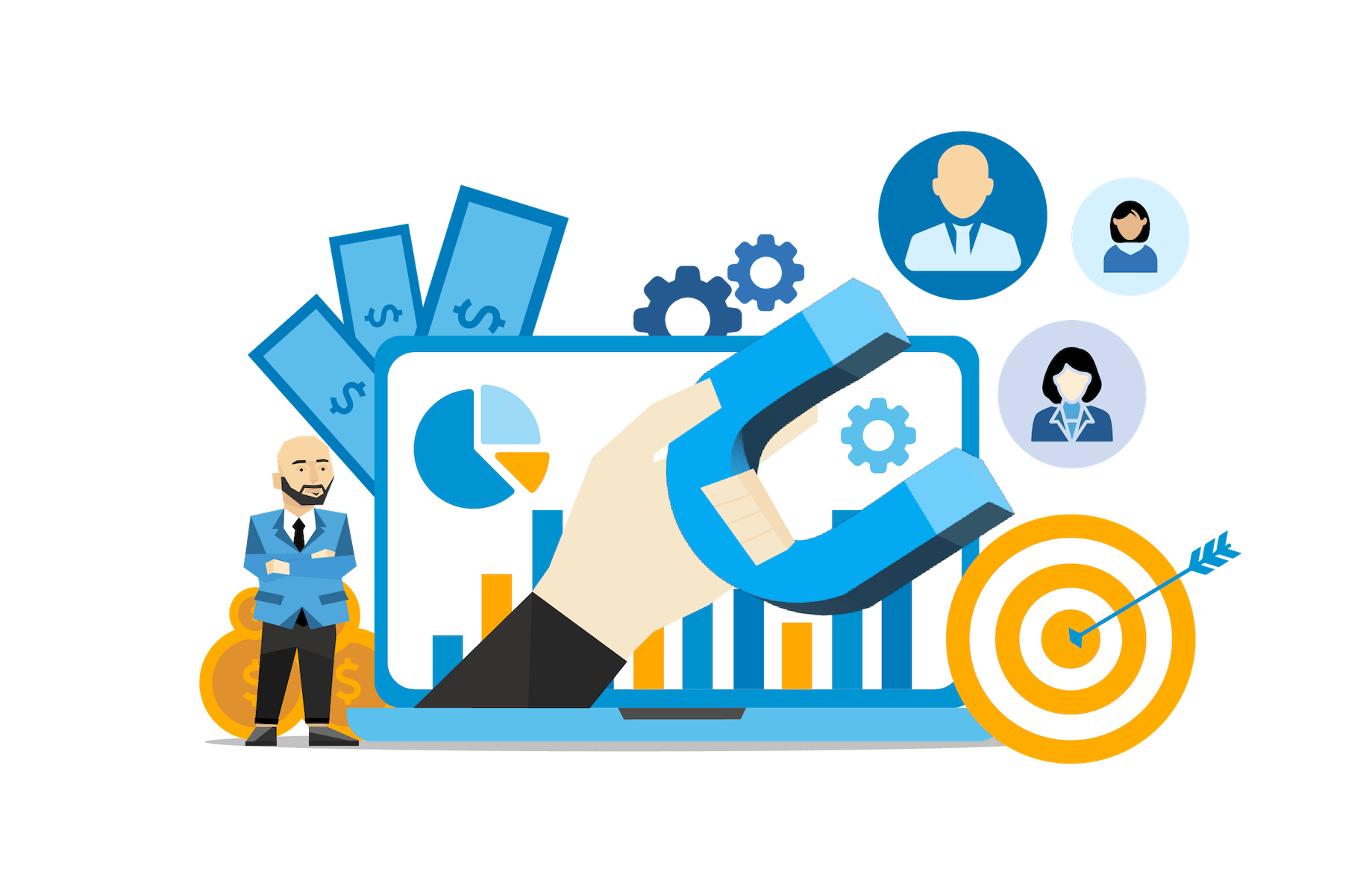A Successful Inbound Marketing Strategy Relies On Traffic Generation
The goal of inbound marketing is to put your company in a position to be found online by your target audience through helpful content and resources. Your website is arguably the most important component driving inbound marketing as it allows your business to live online and makes it easier for prospects to find you. Because the success of your inbound marketing strategy depends on people finding you, one of the most critical facets of your strategy is traffic generation.
Generating traffic helps expose your company to potential leads, which you can then convert and nurture while they’re familiarizing themselves with your business. It’s why so many businesses emphasize the importance of traffic generation. Generating revenue is greatly enhanced when your company continues to increase awareness and exposure online. Yet there’s one caveat to keep in mind when it comes to traffic generation: quality over quantity.
Companies often make the mistake of focusing solely on bringing in as much traffic to their website as possible; however, if that traffic isn’t of high quality, then the chances that you’ll convert those visitors will be slim. Higher quality traffic will generally result in higher quality leads. Following these inbound marketing strategies will help to generate high-quality website traffic if properly implemented.
Focus On The Consistent Creation Of High-Quality Content
If your website is the land you build on, then the content that you post to your website is the foundation on which all of your inbound marketing efforts will be built. Your website is worthless without content. People who visit your website are visiting it because they are looking for content that will educate them, help them, or entertain them. Not only will visitors turn away if your website lacks content (or if your content is of poor quality or is irrelevant to the needs of your visitors), but it’s your content that will help generate traffic to your website in the first place. In fact, your ability to generate traffic is almost entirely based on the content available on your website.
If done correctly, the majority of your website traffic will come organically from search engines. People who are searching for specific types of content will click on the results that search engines like Google provide in their SERPs (search engine result pages). If your content is relevant to a user’s search query and Google (or other search engines, like Bing) determine that your content is of high quality, it will rank higher on their SERP. The better your rankings are, the higher your website will appear on the SERP, thereby providing more exposure to prospects. This is important since most users won’t even make it to the second page of Google’s results. The following are a few proven ways to improve your chances of ranking well:
Write Relevant Content
Your content should be relevant to the needs and interests of your target audience.
Create Well-Written Content
Your content should be easy to read and should be free of grammatical errors and spelling mistakes.
Create Authoritative Content
Your content should showcase your authority on the subject matter and shouldn’t be general knowledge.
Write Long-Form Content
Longer content lets you dive into a subject with more detail and tends to rank much higher as a result than shorter content.
When you write high-quality content, it’s more likely to earn inbound links from other websites linking to your content. Inbound links help to generate traffic in two major ways:
Inbound Links Refer Website Traffic
When another website posts a link to one of your pages, they are providing your website with exposure to their audience. They encourage their traffic to your page because of the quality of your content.
Inbound Links Improve Page Rankings
When a page earns inbound links from reputable websites, it indicates to Google that the content on that page must be of high quality. They’re making the assumption that reputable websites wouldn’t link to bad content. Because Google’s goal is to deliver the highest quality search results to its users, it uses inbound links as a factor in determining page rankings. As you get more quality inbound links, you’re likely to generate more organic traffic from Google and other search engines as a result.
Just like other websites will post links to high-quality content, visitors will share your content on their social media pages if they deem your content to be good. When a visitor shares content on social media, they are exposing it to their social circle, thereby bringing more awareness to your company and potentially generating more traffic as well.
As important as it is to create content for your website, you can also generate traffic by creating content for other websites as well. You can team up with another company or website (one that’s within or relevant to your industry but isn’t competing with your business directly) and write a guest post for their blog. This will help to generate awareness among their audience, which likely overlaps with your target audience. This exposure can help bring in more traffic from that blog post.
Because Google values relevance when ranking content, they reward content that’s “fresh” with higher page rankings. New content means users aren’t presented with content that is out of date. Google determines the freshness of content by taking note of when the content was published (newly posted content is considered much fresher than content that has lived on your site for a long period of time) and content that has been engaged with frequently (somewhat older content that is still getting comments and shares on social media can be considered fresh). To adapt to Google’s freshness ranking, it’s important that you:
Regularly Publish New Content
Post new content on a regular basis to keep your website fresh.
Post Evergreen Content
Evergreen content is content that will never go out of date and is, therefore, more likely to be engaged with even if it’s older.
Update Old Content
Going back and adding to older content (such as by adding more relevant links or statistics) can make it fresh.
Optimizing For SEO To Boost Page Rankings
SEO (search engine optimization) focuses on optimizing your website for Google’s search engine so that it will rank as high on their SERPs as possible. While SEO can be a very effective strategy, it works best when used in conjunction with other strategies, such as your content marketing strategy. The two main types of SEO strategies that will help you attract more web traffic are below:
On-page SEO is the strategy of addressing all of the different factors Google uses to calculate page rankings in a focused attempt to improve rankings and generate more high-quality web traffic. On-page SEO tactics include:
Keyword Research
Keywords help Google match your content to the user intent. Thorough keyword research will ensure that you use the right keywords to optimize your content. Using keywords that are relevant, focused, and competitive will be more effective at helping generate higher-quality traffic.
Properly Structured Content
Breaking up your content using H2s and H3s not only makes your content easier to read and scan for visitors, but it also makes it easier for Google to identify what your content is about. This is especially true if you use relevant keywords in all of your titles, headers, and alt text for any images you use.
Linking
Internal links help to generate more traffic from one page to another and can increase engagement with visitors as well. However, external links are also important. Linking to relevant content on reputable websites shows your intent to help visitors. And the websites you link to may return the favor and link back to your website as well.
Page Loading Speed
If your website pages don’t load quickly, visitors are less likely to explore your website, which means you could lose traffic from page to page. It also means that visitors won’t engage with your content, potentially hurting your ability to rank well. Additionally, if your website loads slowly, visitors who leave aren’t likely to return.
Mobile Optimization
Mobile SEO matters. A website that’s not optimized for mobile use will hurt your overall ranking. This is because many of Google’s users are mobile users. The last thing Google wants to do is send their mobile users to a site that won’t display properly on their mobile devices, so optimizing your content for mobile use is very important.
Off-page SEO refers to the efforts you can make outside of your website to increase your page rankings. For example, writing a guest blog is a form of off-page SEO, since it will help drive more traffic to your website (the host of your guest blog will typically post a link back to your blog on the page on which your guest blog is posted). Earning links and building social signals (such as by posting links to your blog on your social pages to generate likes, shares, and comments) are all forms of off-page SEO.
Using Social Media To Generate More Traffic
Billions of people around the world use social media, which means that it’s a great source of potential traffic. Simply posting a link to your website under your social media profile can help bring in some traffic from followers or potential leads. However, knowing what social channels your target audience is using is essential to being able to leverage your social presence to generate high-quality traffic. Here are a few social media tactics you can use to generate more traffic:
When you post new content to your website’s blog, promote the content to generate awareness of it. Depending solely on organic traffic is not a good idea since getting a good ranking is partially based on things like social signals. And posting links to new blog content on your social pages is a great way to send followers back to your website.
Even if you’re not promoting new content, social media is an excellent way to build awareness of your brand. You can do this by engaging directly with followers when they ask questions or post comments. Such interactions are public, which means that they can help build your reputation and increase awareness. Engaging in relevant discussions on your social page or in different groups or communities is a great way to spread awareness of your company as well.
Industry influencers can help to build your reputation and increase awareness of your company significantly. Identifying industry influencers and engaging with them can help you build a positive relationship with them. This could result in an influencer posting a link to your blog at some point, which can generate massive amounts of traffic as a direct result since influencers tend to have huge followings.
Website Engagement Metrics To Track For Traffic Generation
Monitoring various website engagement metrics can provide you with a lot of useful information about not only how much traffic you’re generating, but where your traffic is coming from and whether it’s of high quality. Certain metrics can help you identify where you’re having trouble bringing in traffic, what tactics are and aren’t working, and more, all of which will allow you to make the proper adjustments to your tactics. Some of the metrics you should monitor include:
Monitoring how many people are visiting your website over time does give you a general idea of how well your marketing efforts are doing. However, it doesn’t provide insight into how you can improve your traffic.
Sources let you know where your traffic is coming from.
Session duration gives you some insight into the quality of your traffic. If the average session duration of visitors from one source is a longer amount of time than other sources, then you know that they are very engaged.
The number of pages a visitor checks out per session can tell you a lot as well. If it’s only one page and it’s a short blog post, there might be an issue with the relevance of your content. If it’s a number of pages, it means the visitor was relatively engaged. If it’s too many pages, it might mean that they couldn’t find what they were looking for.
If the percentage is too high, it means that even though you’re generating new traffic, it may not be of high quality since they’re not coming back. If the percentage is too low, then you’re not generating enough new traffic.
Traffic Generation Mistakes To Avoid
Having a good traffic generation strategy in place can help you bring in lots of potential leads; however, there are a number of common mistakes that can render all of that traffic you’re bringing in useless. These mistakes include:
As previously mentioned, it’s important to emphasize quality over quantity. If you’re using the wrong keywords, then you could be bringing in traffic that’s simply not relevant to your brand. In fact, writing the wrong type of content can do the same thing, which is why you should stick to content that is relevant to your business. Otherwise, the people who visit your website will have no interest in the products or services you offer.
Generating traffic isn’t the only step in a successful inbound strategy. You need to have a strategy in place to convert those visitors. Even if you’re attracting high-quality traffic, your visitors aren’t going to convert themselves. You will need to address each stage of the buyer’s journey throughout your website to ensure that you guide and nurture your visitors through their journeys so that you can capture them as leads or customers.
You’ll lose the traffic you generate quickly if your website experience is poor. To provide a good website experience you need to make sure that your website loads quickly, that your links all work, that your content is of high quality and easy to read, that your website is easy to navigate, that your website is mobile-friendly, and that the overall layout and design is user-friendly, visually pleasing, and consistent.
Black hat tactics try to trick Google into ranking pages high on their SERP whether the content is deserving or not. This can include keyword stuffing, duplicating content, and plagiarism, all of which can result in serious penalties (such as a significant demotion in ranking or complete removal from Google’s SERP).
Traffic Generation Requires A Long-Term Content Creation Strategy
Traffic generation is incredibly important to the success of your inbound marketing strategy. But generating traffic isn’t a short-term tactic, it’s a long-term strategy. It takes both patience and effort to build your web traffic steadily over time, especially if you care about the quality of your traffic.















